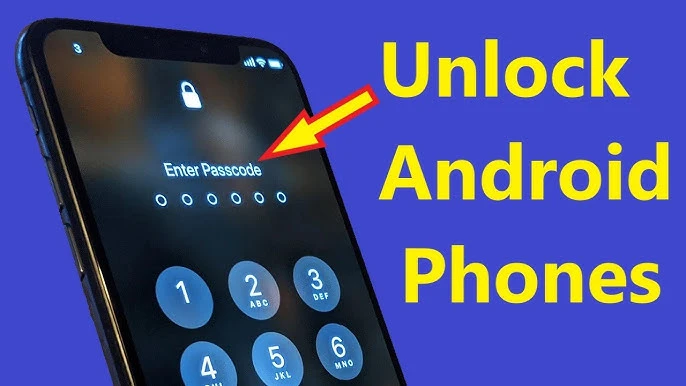In today’s digital age, convenience is key. One of the most efficient ways to secure your device is to screen lock with voice command. Instead of manually pressing buttons, you can simply say a command, and your device will lock instantly. This method is particularly useful when your hands are occupied, or you want a seamless and quick way to secure your screen.
In this beginner-friendly guide, we’ll explore different ways to screen lock with voice command on Windows, macOS, Android, and iOS devices. We’ll also discuss third-party apps, troubleshooting tips, and advanced automation techniques.
1. Setting Up Voice Commands on Windows
Step 1: Enable Windows Speech Recognition
To begin, enable Windows Speech Recognition, which allows your computer to understand and execute voice commands.
- Click on the Start menu and go to Settings.
- Navigate to Ease of Access > Speech.
- Toggle on Speech Recognition.
- Follow the on-screen instructions to train your voice.
Step 2: Use Cortana to Lock Your Screen
Windows users can use Cortana, Microsoft’s virtual assistant, to lock their screen.
- Open Cortana by clicking on the search bar or using the shortcut Win + C.
- Say “Hey Cortana, lock my computer”.
- Your screen will lock instantly.
If Cortana does not recognize the command, ensure that voice activation is enabled in the settings.
2. Screen Lock with Voice Command on macOS
Step 1: Enable Siri on Mac
Apple’s Siri can also help you lock your screen using a voice command. Here’s how:
- Open System Settings.
- Navigate to Siri & Spotlight.
- Enable Listen for ‘Hey Siri’.
- Train Siri with your voice.
Step 2: Use Siri to Lock Your Mac
Once Siri is enabled, follow these steps:
- Activate Siri by saying “Hey Siri”.
- Say “Lock my screen”.
- Your Mac will lock immediately.
If you face any issues, make sure Siri is set up correctly under Security & Privacy settings.
3. How to Screen Lock with Voice Command on Android
Step 1: Enable Google Assistant
To use voice commands on Android, you need Google Assistant.
- Open the Google App.
- Tap your profile picture and select Settings.
- Go to Google Assistant > Hey Google & Voice Match.
- Toggle on Hey Google.
Step 2: Lock Your Screen with Google Assistant
Once Google Assistant is enabled, follow these steps:
- Say “Hey Google, lock my phone”.
- If it does not work, try “Turn off screen”.
- Your phone should lock immediately.
Some Android models may require additional permissions under Device admin apps in settings.
4. Using Voice Commands to Lock an iPhone
Step 1: Enable Siri
To lock your iPhone with your voice, first, activate Siri.
- Open Settings.
- Go to Siri & Search.
- Enable Listen for ‘Hey Siri’.
- Follow the setup process to train your voice.
Step 2: Use Siri to Lock Your iPhone
Now that Siri is set up:
- Say “Hey Siri, lock my screen”.
- Your iPhone will lock immediately.
If this does not work, you may need to use Shortcuts (explained in the next section).
5. Automating Screen Lock with Shortcuts and Third-Party Apps
Using Shortcuts on iPhone
For a more advanced approach, use Shortcuts:
- Open the Shortcuts app.
- Tap + to create a new shortcut.
- Add the Lock Screen action.
- Assign a voice command like “Secure my phone”.
Now, whenever you say this command to Siri, it will lock your phone.
Third-Party Apps for Voice Lock
If your device does not support voice locking natively, third-party apps can help:
- Macrodroid (Android) – Allows you to create a custom voice-triggered lock command.
- Tasker (Android) – Automates screen locking with voice commands.
- Voice Access (iOS & Android) – Provides accessibility features, including screen locking with voice commands.
6. Troubleshooting Common Issues
Issue 1: Voice Command Not Recognized
- Ensure voice activation is turned on.
- Train your voice assistant again in the settings.
- Try different variations of the command, such as “Turn off screen” instead of “Lock screen”.
Issue 2: Google Assistant or Siri Doesn’t Lock the Screen
- Check for updates to your voice assistant.
- Enable device administrator permissions in settings (Android).
- Use the Shortcuts app (iPhone) for a custom command.
Issue 3: Cortana Not Locking Windows PC
- Make sure Cortana is enabled under Privacy settings.
- Try using Windows Speech Recognition instead.
Conclusion
Locking your screen with a voice command is a smart, hands-free way to secure your device. Whether you’re using Windows, macOS, Android, or iOS, there are simple steps to enable this feature. If built-in voice assistants don’t support screen locking, third-party apps and automation tools can provide a solution. By following this guide, you can enhance your device security while enjoying the convenience of voice commands.






